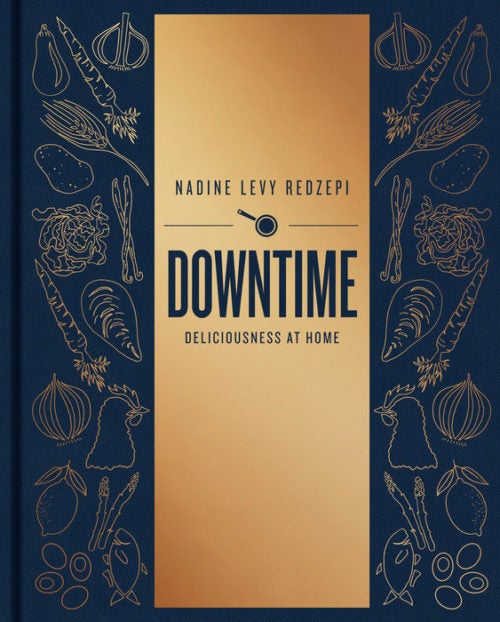Chicken Livers and Avocado on Rye Bread
4
servings
Main
Course
Print Recipe
Ingredients
Directions
Ingredients
2 tbsp
salted butter, at room temperature

4
slices dark rye bread

12 oz
chicken livers

2 tbsp
salted butter, at room temperature

3 tbsp
canola oil

¼ c
veal demiglace*
I am lucky to be able to buy demiglace—veal, chicken, beef—from my butcher. It comes in a jellied state and I divide leftovers into 2-tablespoon portions and freeze them. They are so handy to have for enriching sauces, and in a pinch you can add them to water to make stock. If you aren’t as fortunate, demiglace is available in most gourmet food shops in a shelf-stable package or jar. It is also fairly easy to make your own by cooking down unsalted stock until it is about 1/10 its original volume.
*Show Note

Flaky sea salt

1
avocado

25
fresh chives

1
lemon

Freshly ground black pepper, to taste

It’s fun to take something familiar from childhood and reinvent it as a sophisticated, grown-up appetizer. Dark sourdough rye bread topped with a thick slice of leverpastete—a cross between pâté and American liverwurst—is standard lunch-box fare for every Danish child. I’ve deconstructed that combination into a dish that’s a little lighter and a lot easier to make, without all the puréeing and molding. Danish guests always smile when they try this dressed-up version of a familiar old friend, but even if you didn’t grow up eating chicken livers, give this savory combination a try. Look for a good, chewy whole-kernel sourdough rye bread; otherwise, use any dense whole-grain bread. These can be eaten with a fork and knife or as a crostini.
Directions
- Preheat the oven to 350°F.
- Butter the bread on both sides and arrange the slices on a large, rimmed baking sheet. Bake, turning the bread over halfway during baking, until the bread is a bit darker around the edges, 8 to 10 minutes. Transfer to a wire rack to cool.
- While the bread toasts, drain the chicken livers and pat them as dry as possible with paper towels. Trim the livers and cut them into large, bite-sized pieces. Handling raw livers takes some getting used to—hang in there! You may find small globs of fat or veins attached; just trim them off with a small sharp knife.
- Heat the oil in a large skillet over medium-high heat until it is shimmering but not smoking. Add the livers in a single layer. Cook without moving them until they are caramel brown on the bottom, about 2 minutes. Flip the livers and brown the other side, about 2 minutes more. Don’t crowd the chicken livers in the center of the pan, or they won’t brown properly and will give off too much liquid.
- Add the broth and bring to a boil. Tilt the skillet so the broth pools on one side. Use a long-handled spoon to baste the livers a few times to give them a glaze, about 1 minute. Cut into a liver to be sure it is done—it should be pink, not red. Simmer 1 minute longer, if necessary. Season with salt and remove from the heat.
- Cut the avocado in half lengthwise. Twist the halves to separate them. Hold the half with the pit in one hand. Holding the knife in your other hand, rap the knife blade into the pit to lodge it there. Twist the knife to loosen and remove the pit. Use the tip of the knife to cut the avocado flesh lengthwise into thin slices. Use a large spoon to scoop out the flesh onto a plate. Repeat with the other half.
- To assemble the toasts, thinly slice the chives. Cut the rye toasts in half and arrange on a serving platter. Top with equal amounts of the avocado slices, followed by the chicken livers (cut the larger ones in half, as needed). Drizzle with the pan juices. Squeeze a little lemon juice over all. Season the toasts with pepper and flaky salt, sprinkle with the chives, and serve immediately.

